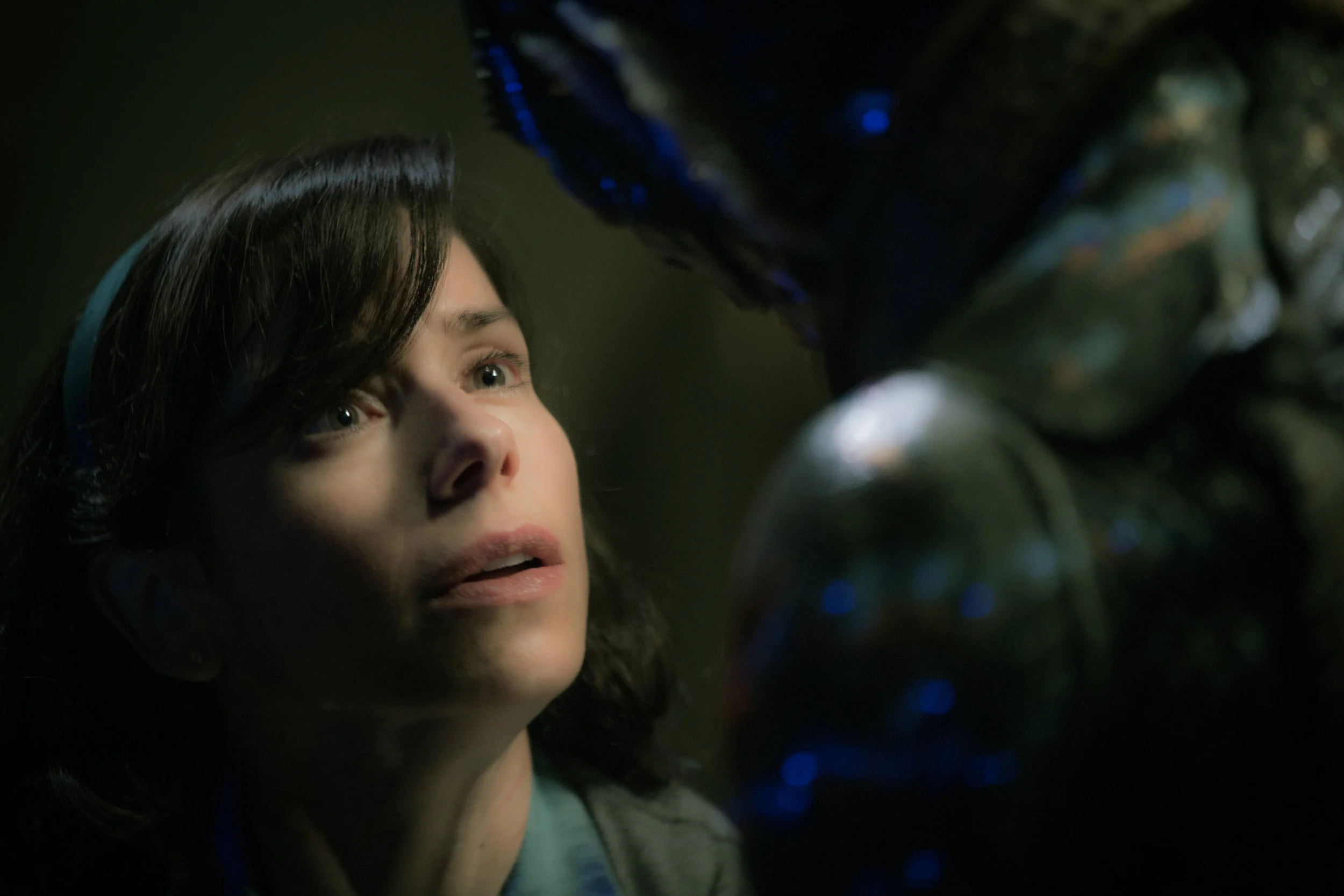'The Shape of Water' Film Review
by Will Lindus
Guillermo del Toro is a risk taker with a unique and specific set of sensibilities that make his films such a breath of fresh air to watch. On paper, The Shape of Water sounds like it shouldn’t work; after all, it’s a film about a mute woman and an aquatic fish-man who fall in love against the backdrop of Cold War era paranoia. In del Toro’s capable hands, though, this premise becomes the canvas for something truly special, an atmospheric romance dressed up in science fiction / horror trappings.
The film follows Elisa (Sally Hawkins), a mute cleaning woman who works at a government research facility in the 1960s. Elisa is a woman of agency, whose disability is never played as a handicap, who is seen to be a complex woman with sexual and romantic needs, but who isn’t defined or crippled by those yearnings. Early in the film, we see Elisa in a sequence of self-pleasure in a bath, a sequence that could have felt exploitative but instead comes across as empowering. Part of this, of course, is from the way Elisa is written and filmed, but a large part of the strength of this character comes from the phenomenal acting chops of Sally Hawkins. For a (mostly) non-verbal protagonist, Hawkins utilizes her charisma, body posturing, facial expressions, and her focused energy to bring Elisa to life. Without Hawkins, this film doesn’t work.
Another part of Elisa’s appeal is her status as an outsider compared to the straight-laced G-Men who run the facility, most prominent of which being Richard Strickland (Michael Shannon). Her closest friends are her coworker Zelda (Octavia Spencer) and her neighbor Giles (Richard Jenkins). The trio - a mute woman, a black woman, and a gay man - represent very clearly the ‘Other’ that Cold War politics sought to protect against. We root for them to succeed, and in doing so, we open ourselves to people and concepts alternative to the norm.
Take, for instance, the film’s premise of a woman and a captive fish-man falling in love and engaging in a sweet, caring, and wildly passionate love affair. Elisa and Zelda find out that Strickland and his team have captured a beast known only as ‘The Asset,’ a creature reminiscent of The Creature from the Black Lagoon, only sexier. While Zelda tries to keep her head down, Elisa becomes fascinated with the creature, at first bonding with it using food and music and sign language as tools, and then developing deep romantic feelings for it. Guillermo del Toro sought to subvert the idea of the beast that kidnaps the woman, a la King Kong, and instead make the attraction mutual. This relationship shouldn’t work. Dammit, though, it really does. The bond between Elisa and The Asset is always tinged with a bit of danger, but the sensual sequences feel as valid as just about any other committed to film in 2017.
Bottom Line: There are truly no other filmmakers who can do what Guillermo del Toro does nearly as well. His mastery of atmospheric Gothic settings, modern fairytale narratives, and romantic sensibilities make his films a delight to watch, and each of these elements is placed on full display in The Shape of Water. It’s a romantic movie for people that loathe romantic movies, it’s a sci-fi flick for people who hate science fiction, and its horror elements are married to the narrative in ways that even those who avoid scary films would be completely fine with. It is through this strange and unconventional combination of ideas that the film soars, and for a film about a strange and unconventional romance? That feels pretty fitting. If you watch only one movie about a fish-man having sexy time with Sally Hawkins this year, make it The Shape of Water.
4 out of 5 Bear Paws


